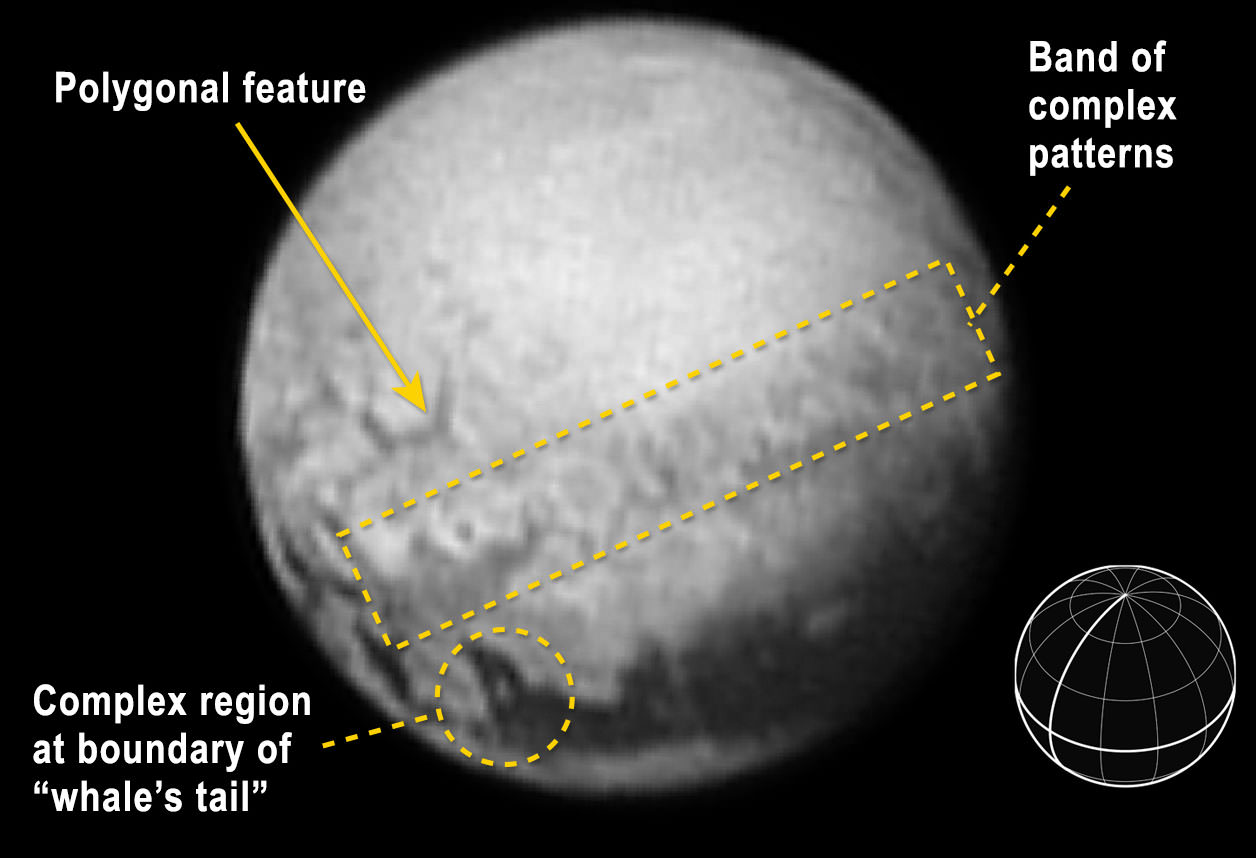Bit by the Pluto bug? Day by day, new images appear showing an ever clearer view of a world we inexplicably love. Call it a dwarf planet. Call it a planet. It’s the unknown, and we can’t help but be drawn there.
Pluto made history when it was discovered in 1930. In 2015, it’s doing it all over again. Check out the new geology peeping into view.I’m reminded of the early explorers who shoved off in wooden ships in search of land across the water. After a long and often perilous journey, the mists would finally clear and the dark outline of land take form in the distance. It’s been 9 1/2 years since our collective Pluto voyage began. Yeah, we’re almost there.

Credit: Michael Soluri
Today’s image release clearly shows a world growing more geologically diverse by the day.
“We’re close enough now that we’re just starting to see Pluto’s geology,” said New Horizons program scientist Curt Niebur, on NASA’s website. Niebur, who’s keenly interested in the gray area just above the whale’s “tail” feature, called it a “unique transition region with a lot of dynamic processes interacting, which makes it of particular scientific interest.”
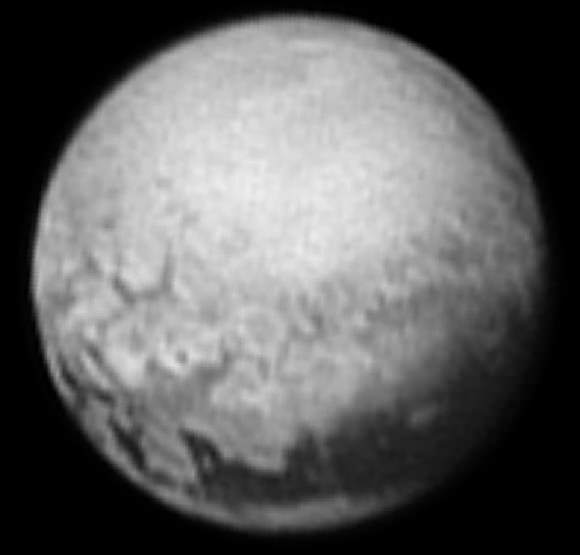
Not only that, but the new photo shows an approximately 1,000-mile-long band of swirly terrain crossing the planet from east to northeast, a large, polygonal (roughly hexagonal) feature and new textures within the ‘whale’.
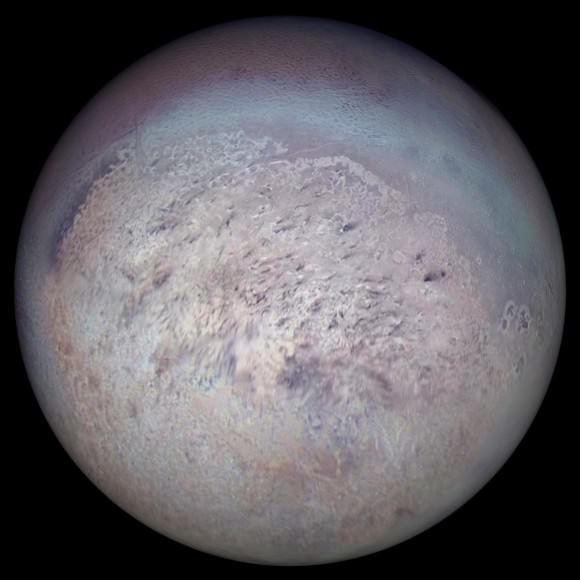
Even to a layperson’s eye, Pluto’s terrain appears very different from that of Ceres or Vesta. In trying to make sense of what we see, Neptune’s moon Triton may be our best Plutonian analog with its frosts, weird cantaloupe terrain and an assortment of dark patches, some produced by icy volcanism.
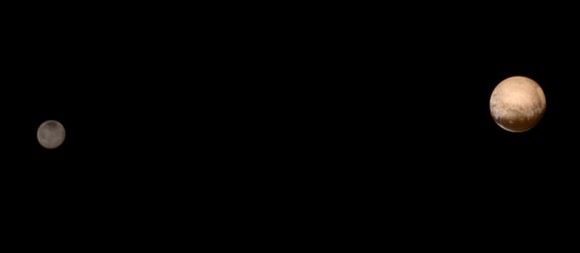
Credits: NASA-JHUAPL-SWRI
Other recent photos include this pretty view of Charon and Triton snapped late on July 8. NASA describes them eloquently as “two icy worlds, spinning around their common center of gravity like a pair of figure skaters clasping hands.” Charon and all of Pluto’s known moons formed from debris released when another planet struck Pluto long ago. New Horizons principal investigator Alan Stern attributes its bland color to its composition — mostly water ice. Pluto in contrast has a mantle of water ice, but it’s coated with methane, nitrogen and carbon dioxide ices and possibly organic compounds, too.
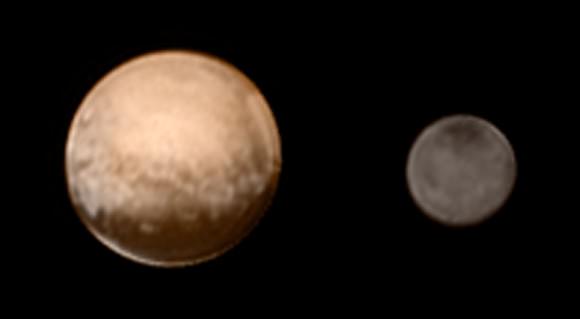
Hold on tight – there’s LOTS more to come!

